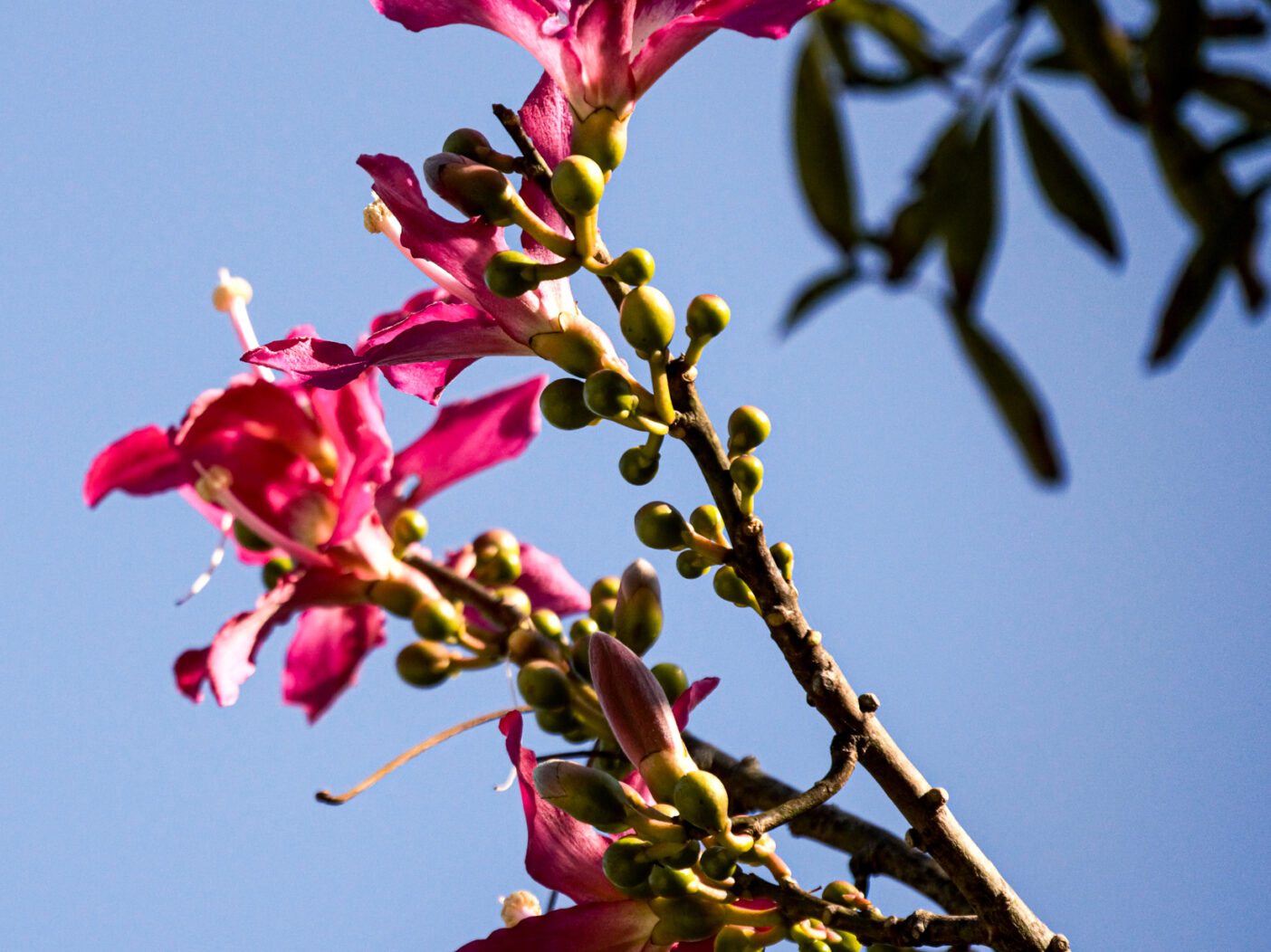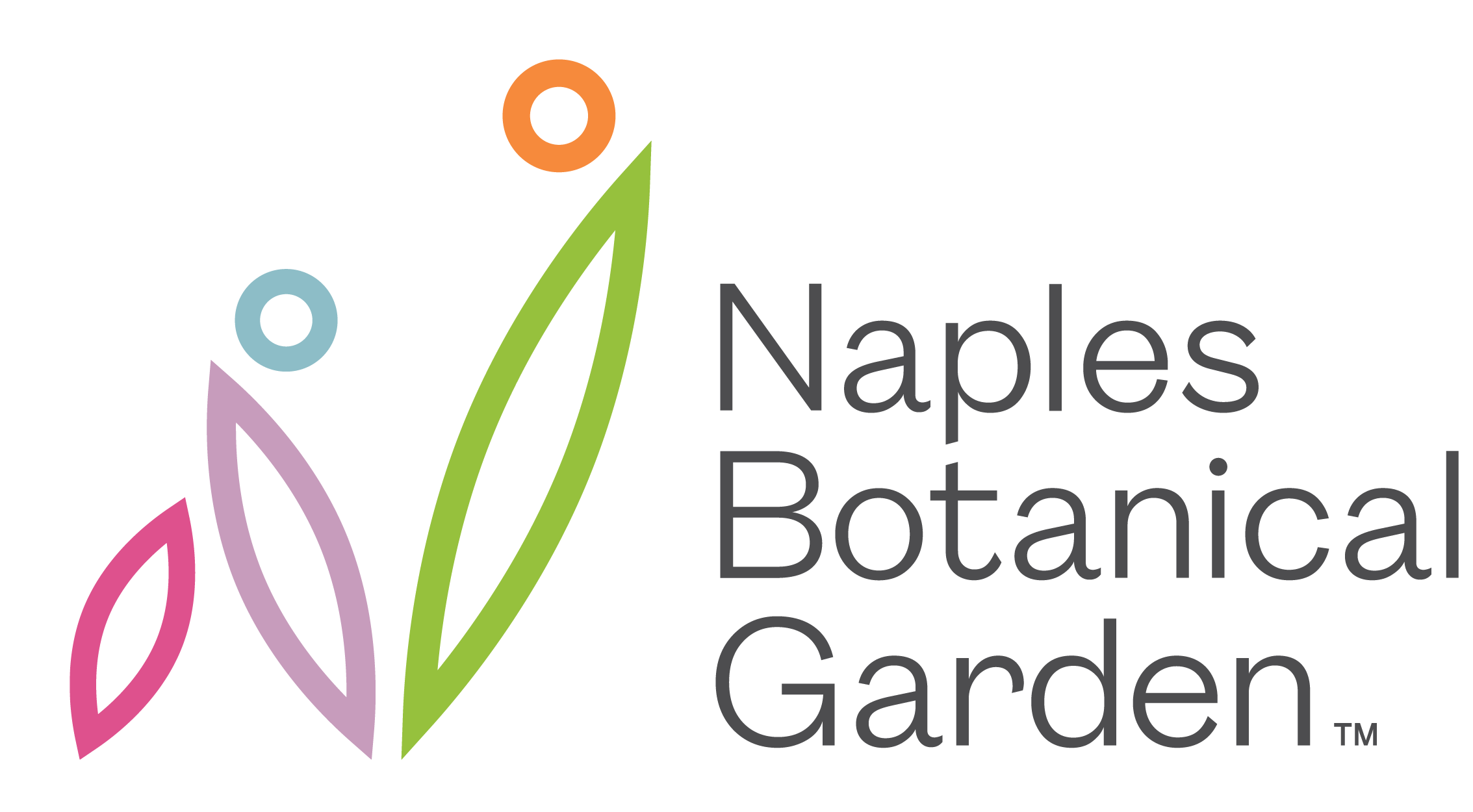
It’s fall. Allegedly.
OK, I’ll admit. I’m a Northern transplant, fall (the New England version) is my favorite season, and around Labor Day (when kids are supposed to go back to school), I’m filled with a restlessness that no amount of pumpkin product can satisfy.
This, after 20 years in the Sunshine State!
At long last, I’m vowing to appreciate fall for what it is here rather than pine for frost and foliage. Today, I’m setting out with Britt Patterson-Weber, the Director of Education and Visitor Experience, for a subtropical version of a fall walk. Britt’s a transplant, too, who has lived up North and out West, but she’s far more in tune with Southwest Florida’s environment than I am.
“To me, fall is pink,” she begins on this blissful, low-humidity morning.
She pinches a stem of muhly grass, Muhlenbergia capillaris, between index finger and thumb and shows me how the tip is just beginning to turn color. Within a few weeks, the long-stemmed grasses will have transformed entirely into “clouds of pink,” as she puts it. We have muhly grass throughout the Garden, but the best place to see it is along the lakeshores.
We pass a silk floss tree, Ceiba speciosa, (pictured above) near the administrative building and another in the Kapnick Brazilian Garden, blossoms of pink just beginning to emerge. The show-stopping trees promise to be awash in them at their peak. Meanwhile, as the silk floss enters its prime, the Virginia saltmarsh mallow, Kosteletzkya pentacarpos, will offer its annual farewell — a last burst of rose-colored blooms best seen by the lakes.
Britt pauses and glances to the cloudless horizon. “This. This is a fall sky right here. Blue, blue, blue.”
Never mind orange and yellow. We’ve got pink and blue.
Up North, the crops are harvested. Here, the prime growing season is just beginning.
“This is our vegetable planting season,” Britt says. “Out here in the Idea Garden, the Enabling Garden, Children’s Garden, Asian Garden, you’ll see more vegetables growing.” We produce sweet potatoes, tomatoes, tomatillos, eggplant, to name a few, Britt says. Come November, gardeners will plant the leafy greens, which are harvested in the winter.
Still struggling to adjust? I understand entirely. That’s why I was grateful when Britt pointed out two other fall features that offer those of us from elsewhere a little touch of home.

“We have some red maples,” she says, nodding in the direction of a scarlet-hued tree opposite the Children’s Garden. By late October, you’ll see the Colville’s glory, Colvillea racemosa, a tree that produces cylinder-shaped clusters of bright orange buds that bloom into tufts of yellow. “They remind me of candy corn,” Britt says.
You can celebrate the season with us at Fall Walk, Oct. 17 – 31, with live music, lights, photo ops, games, and special fare in the Fogg Café. And yes, there will be pumpkins. Because some traditions have no geographic bounds.
 About the Author
About the Author
Jennifer Reed is the Garden’s Editorial Director and a longtime Southwest Florida journalist.

